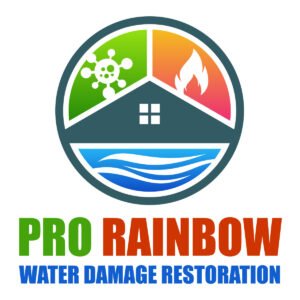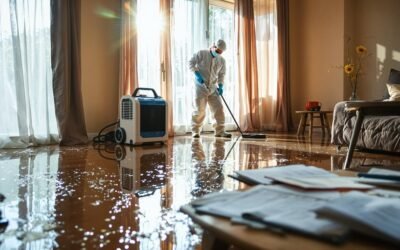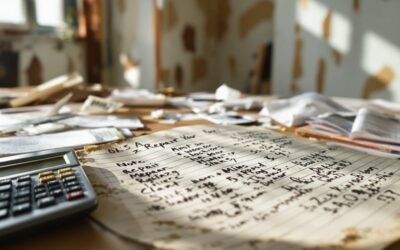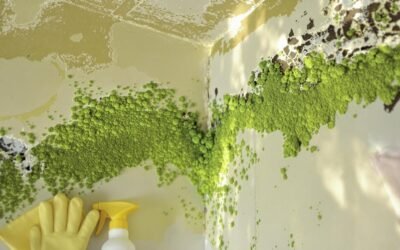Water restoration services can efficiently assess damage, extract water, and implement structural drying techniques to mitigate losses. They utilize advanced equipment and methods to prevent further issues, like mold growth. Nevertheless, these services can't replace extensively damaged materials, nor do they guarantee complete mold remediation unless specified in your contract. Furthermore, some water damage may not be covered by your insurance, particularly in flooding scenarios. Understanding these nuances is essential for homeowners. You may find it beneficial to investigate the specifics of what these services entail to make a well-informed choice about your property's restoration.
Key Takeaways
- Water restoration services effectively assess and mitigate water damage using specialized equipment and techniques to prevent further issues like mold growth.
- These services can provide thorough water extraction and structural drying, but may not guarantee complete restoration of all materials.
- Mold remediation is possible, but not always covered by insurance unless specified in the service agreement.
- Professional restoration may require replacement of severely damaged materials after treatment, managing expectations about the extent of recovery.
- Understanding your insurance policy is essential, as coverage for water damage varies and may exclude certain incidents like flooding or sewer backups.
Overview of Water Restoration Services

When your property suffers water damage, understanding water restoration services can be vital. These services encompass a range of techniques designed to mitigate the effects of water intrusion and restore your property to its pre-damage condition. This process typically includes assessment, extraction of standing water, drying, and dehumidification.
However, it's important to separate facts from restoration myths; for instance, not all water damage is visible, and DIY methods may not effectively remove moisture, leading to mold growth. Certified professionals utilize specialized equipment and techniques to guarantee thorough restoration. They additionally adhere to industry standards, which can help prevent further damage. Knowing what these services can truly offer empowers you to make well-informed choices when facing water-related issues. Moreover, professional services often prevent mold growth through thorough drying techniques, ensuring a safer environment in your property.
Emergency Water Extraction
Emergency water extraction is a vital step in the water restoration process, as it helps prevent further damage to your property. When you experience flooding or water leaks, a prompt emergency response is crucial. Skilled technicians arrive quickly, equipped with advanced extraction equipment designed to remove standing water efficiently. This equipment includes powerful pumps and vacuums that greatly reduce moisture levels in affected areas. By acting swiftly, you minimize the risk of structural damage, mold growth, and additional complications. It's important to understand that emergency water extraction not only safeguards your property but also sets the stage for subsequent restoration efforts. Relying on professionals guarantees that the extraction process is thorough and effective, providing peace of mind during a stressful situation. Additionally, their cutting-edge technology ensures optimal results in the restoration process.
Structural Drying Techniques

After successfully extracting standing water, the next step in the water restoration process involves implementing effective structural drying techniques. You'll want to use moisture mapping to identify the extent of water saturation in various materials. This data helps in determining the most efficient drying strategy. Employ dehumidification methods, such as refrigerant or desiccant dehumidifiers, to reduce humidity levels and accelerate evaporation. Air movers are likewise critical; they promote airflow, enhancing the drying process. Confirm you monitor humidity and moisture levels regularly to gauge progress. By combining these techniques, you can effectively restore your property's structure, preventing further damage. Remember, timely action is crucial in minimizing long-term effects from water exposure.
Mold Remediation Processes
When addressing mold issues, you'll first conduct a thorough inspection and assessment to identify affected areas. Once you've pinpointed the problem, it's vital to establish containment measures to prevent further spread before removing the mold. This methodical approach guarantees effective remediation and protects your environment.
Inspection and Assessment
A thorough inspection and assessment are critical first steps in the mold remediation process. You'll want to employ various inspection techniques, such as visual assessments and moisture meter readings, to identify affected areas accurately. These methods help you determine the extent of mold growth and the underlying moisture issues causing it.
Next, establish assessment criteria that focus on the type of mold, the area of infestation, and potential health risks. By setting clear criteria, you can prioritize remediation efforts effectively. Documenting your findings during this phase is vital, as it guides the subsequent steps in the remediation process. Remember, a detailed inspection and assessment lay the foundation for successful mold removal and prevention.
Containment and Removal
To effectively manage mold contamination, containment is vital before any removal efforts begin. Water containment strategies prevent spores from spreading, ensuring a focused and efficient damage removal process. Here's how professionals typically handle containment and removal:
- Establish physical barriers using plastic sheeting.
- Utilize negative air pressure machines to filter air.
- Seal off HVAC systems to prevent cross-contamination.
- Employ dehumidifiers to control moisture levels.
- Use specialized mold removal solutions to treat affected areas.
These steps not only safeguard unaffected areas but additionally streamline the removal of mold, making the restoration process smoother and more effective. Understanding these methods helps you appreciate the importance of professional intervention in mold remediation.
Water Damage Assessment

Water damage assessment is vital for effectively addressing and mitigating the impacts of moisture intrusion in your property. This process involves a thorough examination of affected areas to determine the extent of the damage and the water quality. Inspectors will identify not only visible damage but likewise hidden moisture, which can lead to mold growth and structural issues if left unchecked. They'll use specialized tools such as moisture meters and thermal imaging cameras to assess the situation accurately. Understanding the type and severity of the damage is significant for developing an appropriate restoration plan. By prioritizing water damage assessment, you can safeguard your property and guarantee effective remediation, minimizing long-term consequences and costs.
Contents Restoration and Cleaning
When dealing with water damage, contents restoration and cleaning are crucial steps to guarantee your belongings are salvaged and preserved. A thorough contents inventory is fundamental to identify what can be restored. Various restoration techniques are employed based on the material and extent of damage.
Key considerations include:
- Evaluating the type and condition of items
- Utilizing specialized cleaning methods for different materials
- Preventing mold growth through proper drying
- Documenting items for insurance claims
- Reviewing items for repair versus replacement
Preventative Measures and Solutions
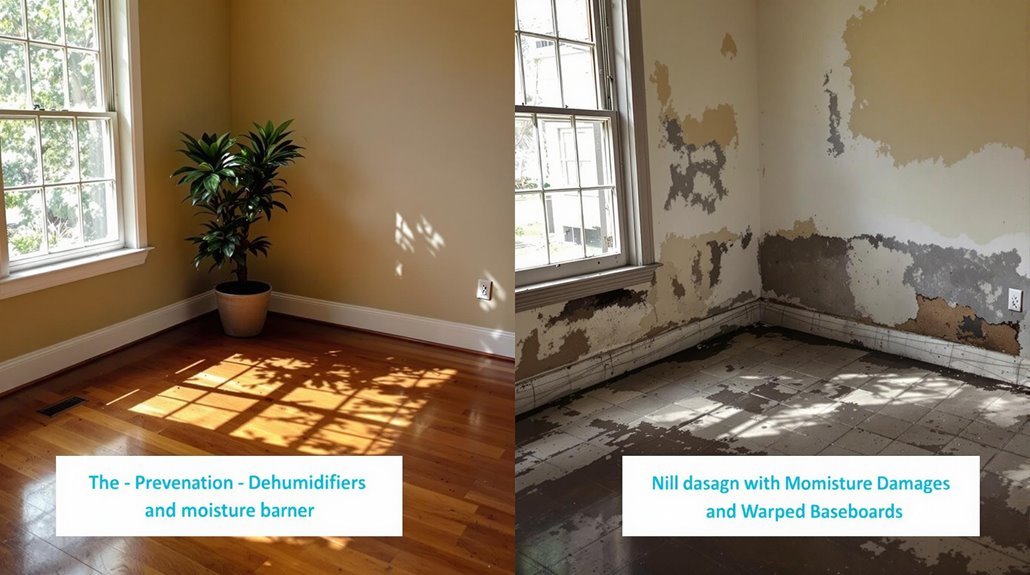
After addressing contents restoration and cleaning, it's important to shift focus toward preventative measures and solutions that can help mitigate water damage before it occurs. Implementing effective preventative maintenance strategies is essential. Regularly inspect your plumbing systems for leaks and confirm that appliances and fixtures are functioning properly. Installing sump pumps and water alarms can provide early warnings of potential issues. Furthermore, consider incorporating water conservation techniques, such as rainwater harvesting and efficient irrigation systems, to minimize excess water flow around your property. Regularly cleaning gutters and downspouts prevents water from pooling near your foundation. By proactively addressing these elements, you not only protect your property but likewise contribute to overall water conservation efforts in your community.
Limitations of Restoration Services
While restoration services can effectively address many water damage issues, they do have limitations that homeowners should be aware of. Understanding these service limitations helps you avoid common restoration misconceptions. Here are key points to contemplate:
- Restoration can't address underlying structural issues.
- It may not remove all moisture, leading to future problems.
- Services typically don't cover mold remediation if not specified.
- Restoration is often a temporary fix, requiring ongoing maintenance.
- You may still need to replace severely damaged materials.
Being informed about these limitations guarantees you manage your expectations and take necessary precautions to protect your property effectively. Always consult professionals to clarify any misconceptions and fully understand what services can and cannot achieve.
Insurance Considerations
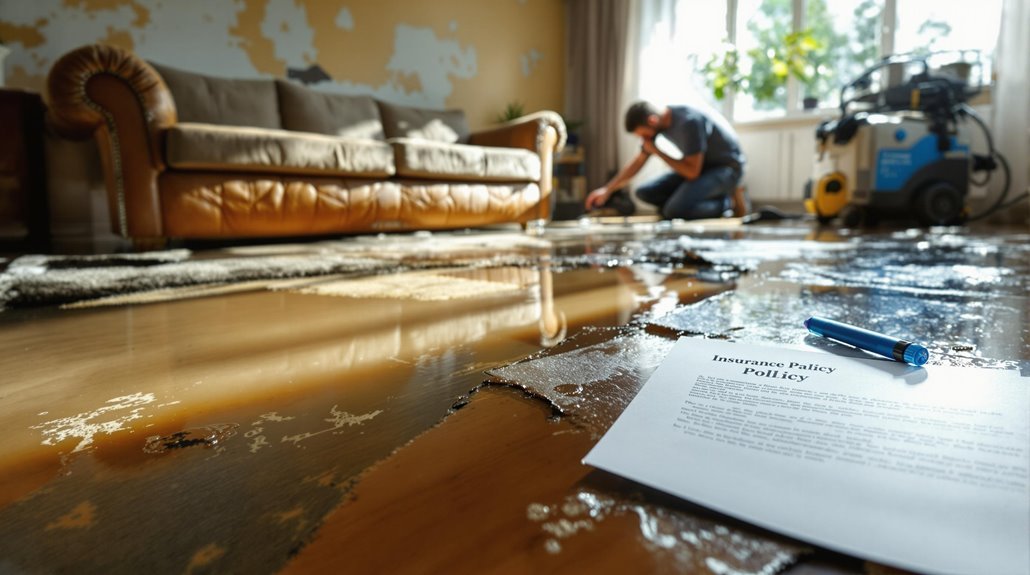
Understanding your insurance coverage is vital, as it can greatly influence how well you can recover from water damage. Review your policy carefully to identify what types of water damage are covered. Most homeowners' insurance policies provide coverage for sudden and accidental water damage, such as burst pipes. Nevertheless, it's important to note policy exclusions, which may leave you unprotected in cases like flooding or sewer backups. These exclusions can vary considerably between providers, so verify you're aware of your specific terms. Furthermore, consider whether you need supplemental flood insurance for thorough protection. Ultimately, knowing your coverage and exclusions helps you make educated choices about restoration services and guarantees you're adequately prepared for potential water damage scenarios.
Choosing the Right Service Provider
How do you guarantee you choose the right service provider for water restoration? Start by evaluating the following factors:
- Service Reputation: Look for reviews and testimonials from previous clients.
- Provider Credentials: Make certain the provider has relevant certifications and licenses.
- Experience: Check how long the provider has been in the industry and their specialization.
- Response Time: Consider how quickly they can mobilize after your call.
- Insurance Coverage: Verify that they carry sufficient liability insurance.
Conclusion
In the end, while water restoration services can work wonders, they can't turn your soggy basement into a luxurious spa. They'll expertly extract water and dry your space, yet they won't magically fix underlying plumbing issues or restore sentimental items. It's ironic how you might expect a quick fix, but true restoration demands time and vigilance. So, as you choose the right service, remember: they're skilled at mopping up messes, not at erasing the past.
